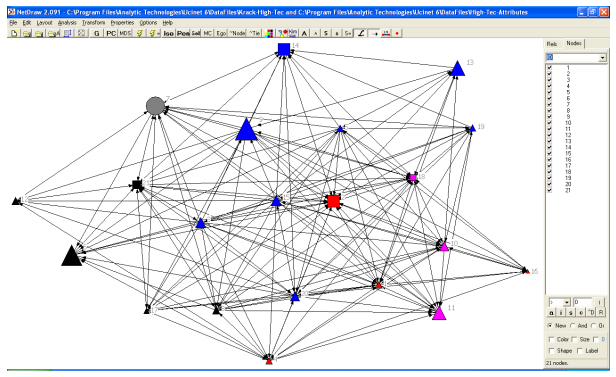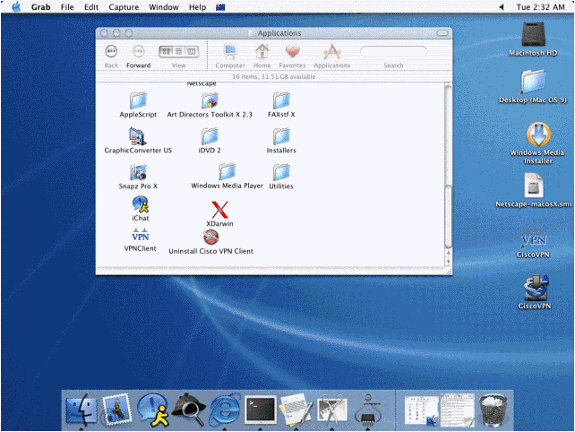- Ucinet For Mac Computers
- Ucinet For Mac Pro
- Ucinet For Mac Catalina
- Ucinet For Mac Download
- Ucinet Free Download
From this page you can download the latest version of Social Network Visualizer. There are installation packages and binaries for the three major Operating Systems (Windows, Mac and Linux) as well as links for the source code.
Click one of the buttons below to download the latest version package for your Operating System. If there is no package for your OS, please download and compile the source code (last icon).
It lets you work seamlessly between Mac, iOS, and iPadOS devices. And work effortlessly with people who use Microsoft Word. Create sophisticated spreadsheets with dramatic interactive charts, tables, and images that paint a revealing picture of your data. Work seamlessly between Mac, iOS. A comprehensive package for the analysis of social network data as well as other 1-mode and 2-mode data. Can read and write a multitude of differently formatted text files, as well as Excel files.
Ucinet For Mac Computers
Download and have fun with social network analysis!
Windows
Scanned with VirusTotal. Verify file integrity with SHA256 checksum
MacOS
(unzip, double click the .dmg file, then double click on SocNetV app while holding Ctrl)
Linux
(make executable and click to run in Debian, Ubuntu, Fedora, SUSE)
Warning for Windows Defender users: Windows Defender might alert you about a threat in SocNetV windows installer. This is a false positive as the installer is automatically created in Appveyor CI and checked for virus with VirusTotal. As you can see in this link, our installer is clean from any harmful agent. If Windows Defender keeps complaining please disable it temporarily, install SocNetV, and then reenable Windows Defender. For your peace of mind, scan the installed files with Defender to verify that they pose no security threat.
Warning for Linux users: On most Linux distributions, there are versions of SocNetV in the official distro repositories, but these are usually quite older and unsupported. For that reason, users of openSUSE, Fedora and Ubuntu are advised to add our repositories (openSUSE/Fedora and Ubuntu PPA) to install and automatically update to the latest and greatest SocNetV version through the package manager (i.e. apt-get install socnetv). If you do not know how to add our repositories in your distro, please read the Instructions in the Manual.

Source code
To compile the source code, please see Instructions.

Development version
Warning: The development is not always stable. Use at your own risk!
You can clone the development branch (called 'develop') of SocNetV with the command
git clone -b develop --single-branch https://github.com/socnetv/app.git socnetv
A new directory called socnetv will be created. To build the development version, install the qt5 libraries and afterwards change dir into socnetv
cd socnetv
and enter the following two commands to compile it:
qmake

Ucinet For Mac Pro
and
make
If you have Qt5 installed, a binary file named socnetv (or socnetv.exe) will be created. You can run it by
./socnetv (in Linux and Mac) or socnetv.exe (in Windows)
Using UCInet Mobile Access requires registration of your hardware or MAC address. If you are using Manual Registration, you will need to locate the MAC address of your wireless device. Use the directions below to locate your MAC address.
What is a MAC address?
A MAC (Media Access Control) address is the hardware address of the Network Interface Card (NIC) of your computer. You must have it on hand to register for the UCInet Mobile Access network and campus-wide DHCP services. This Web page will help you locate and identify it so you may register your Network Interface Card (or cards) for the network.
Ucinet For Mac Catalina
Finding Your MAC Address
Windows
Windows (two methods)
Method 1:
- Click Start and in the Search Programs and Files box type ncpa.cpl and then push Enter on your keyboard.
- The Network Connections window will appear. Double-click on either Local Area Connection icon (if you are trying to register your Ethernet/wired connection) or Wireless Network Connection.
- In the window that appears, click Details… and in the subsequent window you’ll see the Physical Address field: that is your MAC address.
Method 2:
- Click Start then Run (in Windows 7, Start and type in the Search Programs and Files box.)
- Enter: cmd
- Enter: ipconfig /all
If the output scrolls off your screen, and it will on Vista and Windows 7, use: ipconfig /all | more - The Physical Address is your MAC address; it will look like 00-15-E9-2B-99-3C. You will have a physical address for each network connection that you have.
Mac OS
Mac OS
- Click on the Apple menu then System Preferences then Network
- MAC address for wireless connections:
- Select AirPortor Wi-Fi from the list on the left.
- Click the Advanced button.
- On the AirPort or Wi-Fi tab, the AirPort ID or Wi-Fi Address is your MAC address.
Linux
Linux
- Become root, using su.
- Enter: ifconfig -a
- The ethernet devices are called eth0, eth1, and so on The MAC address is in the first line of the output, labeled HWaddr, it is 00:09:3D:12:33:33.
Mobile - iOS, Android, Kindle
iOS
- From the Home menu, tap on Settings.
- Tap on General
- Tap on About
- Scroll down to Wi-Fi Address and write down the address. This is your MAC address.
iOS 14+
There is a new setting in iOS 14 that may change which address our network verifies for registration. If you have updated to this version, you may need to go through the following steps instead.
- From the Home menu, tap on Settings.
- Tap on Wi-Fi
- Tap on the Information Icon next to UCInet Mobile Address or ResNet Mobile Access
- Scroll down to Wi-Fi Address and write down the address. This is the MAC address associated with this particular network. Note that each network will have a unique address associated with it. As such, if both campus networks are used then both addresses would need to be registered.
Ucinet For Mac Download
Android
- Go to Settings->Wireless Controls->Wi-Fi settings.
- Tap the 3 dots on the top right corner.
- Tap Advanced.
- Swipe all the way down to the bottom, and you will see both the IP and MAC address.
Kindle
Ucinet Free Download
- From the Home screen press Menu
- Select Settings
- The Wi-Fi MAC Address is located toward the bottom of the screen in the Device Info section.
Comments are closed.